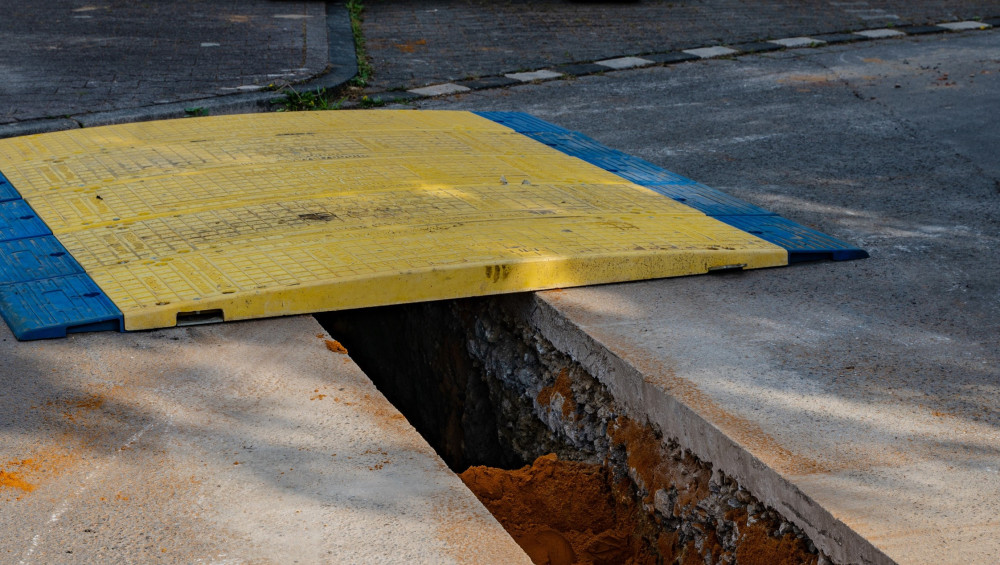A guide to trench safety

In 2022, OSHA reported 39 deaths in trenches, which is more than double the number of deaths in 2021, making it one of the most dangerous construction operations. It’s important to ensure that workers adhere to safe work practices to protect them from cave-ins, falls, and other workplace accidents.
What is a trench? And how does it differ from an excavation?
Trenches and excavations are both used in construction and civil engineering, but their definitions vary slightly. A trench is a type of excavation that is long, narrow and deeper than it is wide, whereas excavations are any cut or cavity made in the ground. Trenches are commonly used when installing or maintaining gas, electricity and water utilities.
What are the risks of working in a trench?
Working in or close to a trench can pose several risks, so workers must be aware of the possible hazards.
- Cave-ins: Cave-ins can be caused when the soil on the edge of the trench walls falls into the trench, for example, when the trench walls have not been reinforced properly.
- Burst Pipes: Workers and the public may risk exposure to gas leaks, or flooding if lines are cut during excavation.
- Trips and slips: Slippery or uneven surfaces can increase the risk of workplace accidents, read our guide to find out how to avoid slips and trips.
- Falls: If the trench is not signposted or covered adequately with a trench cover or road plate when not in use it can increase the risk of falls.
- Falling objects: Placing objects or equipment on the edge of the trench increases the risk of them falling into the trench and causing injury.
For safe working practices, it’s essential to make sure all your employees are aware of the potential risks and any steps they need to take to mitigate them.
How to reduce the risks of working in trenches?
Reading, understanding and being compliant with OSHA's trench safety guidance is the first step before digging or working near an excavation. Preplanning and preparation are the most important steps to take for trench safety. Many on-the-job accidents are the result of poor initial planning. Waiting until after the work starts to think about the right equipment can result in problems on site.
The soil type should be assessed and classified as different types of soil will need to be treated in different ways. For example, stable rock can be excavated with vertical sides. Whereas other soil types will need sloping, supporting, and benching to prevent cave-ins.
Companies should call 811 to “Call Before You Dig” to check for any utility lines like sewer, telephone, electric, gas or water lines so that relevant utility companies or owners can be notified of works.
Equipment should be kept a minimum of at least 2 feet away from the edge of an active trench to prevent objects from rolling or falling into the trench and causing injury.
Trenches should be covered when not in use and should be clearly signposted when not covered. There are a number of products in the LowPro range that can be easily installed by hand as a simple alternative to steel plates. The bright yellow coloring reduces the risks of tripping into the trench, the anti-skid surface design molded into the product creates a safe passageway for pedestrians and vehicles that travel over the trench.
When considering trench safety, it’s essential to know OSHA’s trench safety guidance for the complete rules and regulations. You can also find a number of our own helpful resources on safety and compliance here. To find out more about the trench covers available, read our ultimate guide to road plates or contact our team today.
Related News
How Oxford Plastics Supports Safer Streets Across the US
Across the United States, contractors, utility teams and municipal authorities face increasing pressure to keep workers safe,...

An Industry Guide to LowPro Road Plates and Trench Covers
Across construction and utilities in gas energy, waste-water, water suppy and fibreoptic works, keeping people safe and sites...

The Kit List That Keeps Your Team Safe (and You Covered)
When it comes to running a safe, compliant, and efficient site, the right kit can make all the difference. From managing foot...